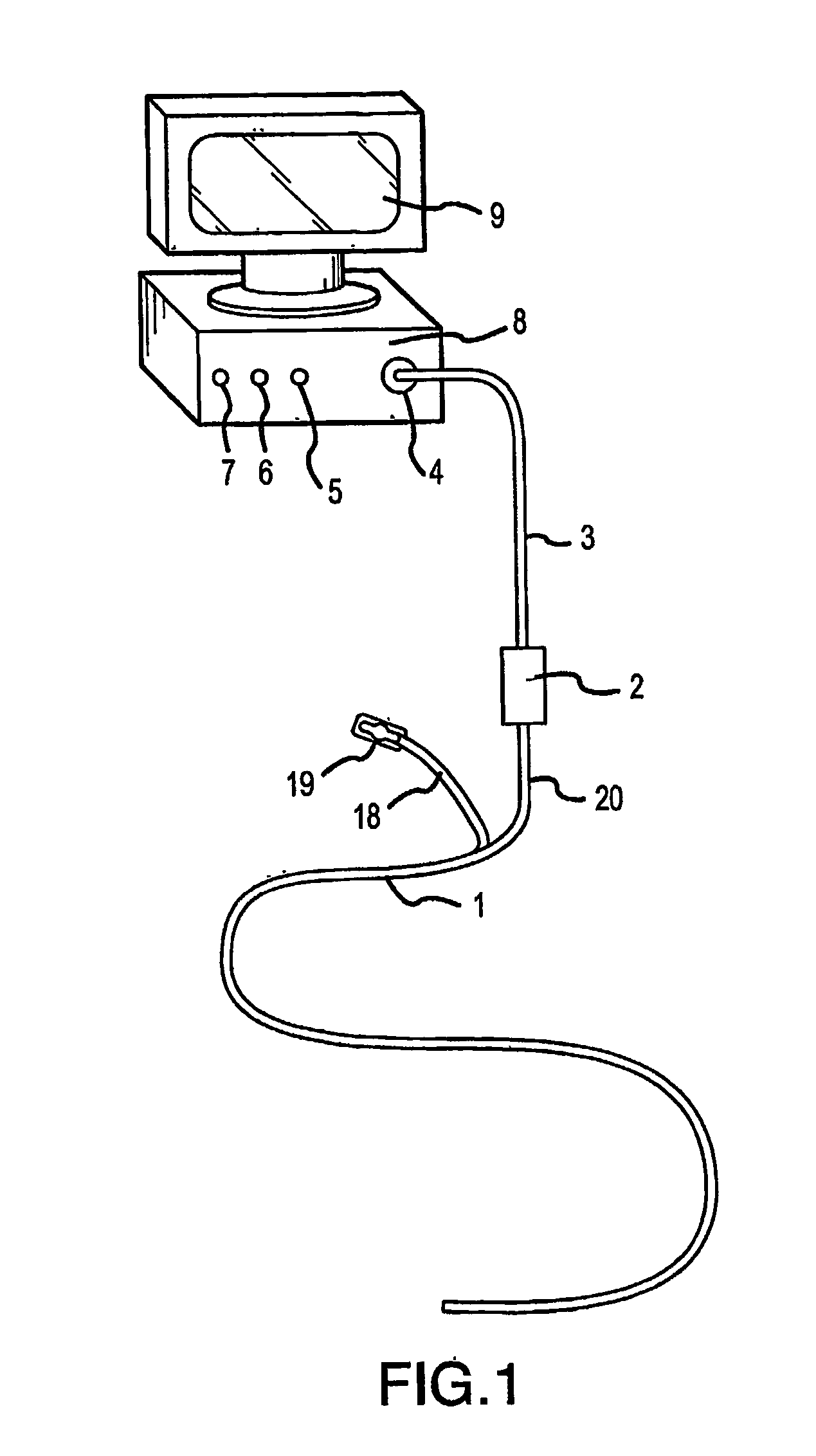Direct, real-time imaging guidance of cardiac catheterization
a direct, real-time imaging and catheterization technology, applied in the field of cardiac catheterization and real-time, forward imaging through blood, can solve the problems of not being able to guide procedures such as angioplasty or ablation, not being able to examine the surface of the heart and vasculature, and not having access
- Summary
- Abstract
- Description
- Claims
- Application Information
AI Technical Summary
Benefits of technology
Problems solved by technology
Method used
Image
Examples
Embodiment Construction
[0082]FIG. 1 shows the near-infrared imaging endoscope system. The system consists of a near-infrared endoscope (1). The endoscope (1) bifurcates into two segments, one branch (18) containing the wires for the articulation mechanism goes to a handle (19) with a control to articulate the catheter distal end. The bifurcation (20) contains the optical fibers, which are connected to an interface box (2) containing the light source and imaging sensor. The fiber assembly consists of illumination and imaging fibers with lenses placed on both ends of the catheter. A cable (3) to the near-infrared imaging acquisition unit (8) [we don't use that term in old patent] as described in U.S. Pat. No. 6,178,346, connects to the interface box (2). The acquisition unit (8) contains the system controller and image processing software and imaging controls (5, 6, 7). The acquisition unit (8). The details of the infrared-imaging are described in U.S. Pat. No. 6,178,346 and thus need not be repeated in det...
PUM
 Login to View More
Login to View More Abstract
Description
Claims
Application Information
 Login to View More
Login to View More - R&D
- Intellectual Property
- Life Sciences
- Materials
- Tech Scout
- Unparalleled Data Quality
- Higher Quality Content
- 60% Fewer Hallucinations
Browse by: Latest US Patents, China's latest patents, Technical Efficacy Thesaurus, Application Domain, Technology Topic, Popular Technical Reports.
© 2025 PatSnap. All rights reserved.Legal|Privacy policy|Modern Slavery Act Transparency Statement|Sitemap|About US| Contact US: help@patsnap.com



